Pierre Agostini
Biographical
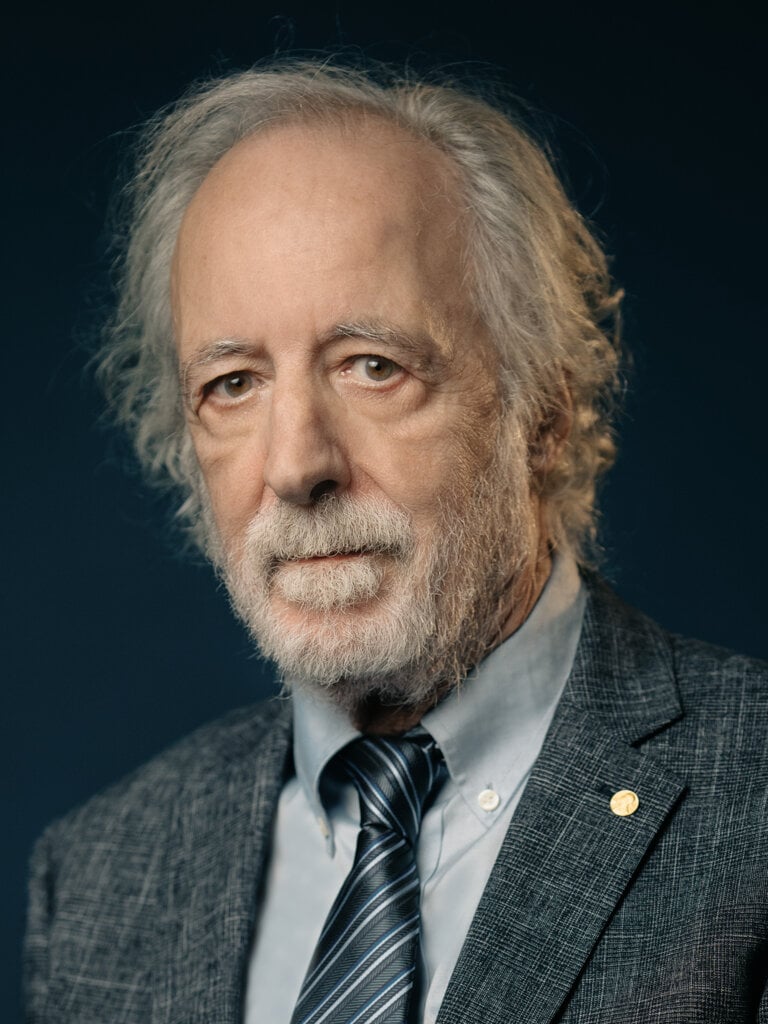
I was born in Tunisia in July 1941, during World War II. The war did not leave me many memories, as I was a bit young even at the 1945 armistice. In Tunis I was educated at the College Alaoui and Lycée Carnot until 1957 when I was transferred to the Prytanée Militaire à La Flèche (France) where I spent three years completing a Baccalaureat (high-school final exam), and Mathématiques Supérieures. This prestigious school, originally founded by Henri IV and turned into a military school by Napoleon, has an excellent alumni association, the existence of which I had forgotten. But apparently it had not forgotten me, as its president reached out for me after the Nobel to congratulate me, sixty-three years after my three years there. At the end of the Math Sup class I left the military life and entered the University in Marseille, France, where my parents had finally settled. I had the idea of doing Math studies, but I was discouraged from doing so and eventually took up a Physics major, more by obligation than a particular taste for the subject. The physics curriculum included mathematics for physicists, classical mechanics, thermodynamics, electricity, optics, electronics, and chemistry and took me three years to complete. Then I continued to a Master in Optics and eventually to a thesis (Doctorat d’Université) in Optics with Professor Henri Chantrel as my advisor. He was a spectroscopist and I worked under him to produce thin films to make high reflectivity mirrors in the UV, a technical subject, highly à la mode at Marseille in those days. It happened at that time a new department was being created at Saclay National Lab (CEA) to start studies in “Multiphoton Ionization”, a subject which was started a couple of years before in Moscow. The new department had generous funding and needed personnel. Yves Gontier, then a beginner in theory and recent hire in the department, was sent scouting around for finishing students. I visited Saclay and was offered the job a few months before defending my thesis. This is, for today’s students, the sign of a vanished time. The Physics curriculum did not have much Quantum Mechanics, except for a course on Mecanique Ondulatoire for the master’s degree. When I asked my advisor what he thought about multiphoton ionization, as a subject, he said “Ah yes, the nonlinear Maxwell’s equations! Don’t do it!”. Nevertheless, I took the job, (I had married the year before, and I guess I needed money) and moved from Marseille to Paris, for my first contact with research in Physics. Our group leader, François Bonnal, left the following year to join a group on nuclear fusion, and Gerard Mainfray was to be group leader for several decades.
I am not sure how I got interested in Physics. It was not my natural choice, but circumstances that brought me there. But research was the thing that kept me in. I guess it could have been math or chemistry as well. I was soon convinced that experiment is the key in Physics, and even though it was slow, required a lot of money, had all kind of pitfalls, it was the way to go. The CEA-Saclay lab offered optimal conditions for experimental investigations and a career without worries. Over the years, it happened several times that atomic/molecular interaction with intense lasers came to what we felt was the end of the subject. Time and time again, though, new developments appeared – either technological or theoretical − which opened new roads. ATI, harmonic generation and sub-cycle physics have been stages on a road to the attoseconds.

The Nanosecond years
“Multiphoton ionization” or MPI, required power lasers. I had no experience with lasers, naturally (except perhaps a He-Ne laser with mW power seen in a demo in the electronics course), and everything was new. We started with a Q-Switch Ruby laser and rapidly switched to a Nd-Glass equipment. This was composed of an oscillator triggered by a rotating prism (firing every three minutes, preceded by the siren sound of the prism until the bang of the shot) and three amplifiers, I seem to remember, with rods of increasing diameters to reduce the risk of glass breakdown (it did break down anyway, which provided us with a wonderful collection of used rods). The flash lamps which pumped the laser were augmented by giant capacitor banks which literally filled the room. The energy par pulse was around 50 Joules, and the pulses were a few tens of nanoseconds (peak power 1 GW). For focusing, we used special aspherical lenses with a big hole at the center to avoid breakdown from the reflection on the output face. The peak intensity of the order of 1012 w.cm–2 would appear rather weak in considering the volume and the noise of the installation. The connection with the theory was difficult, especially for me with my lack of preparation in Quantum Mechanics. The only parameter we could measure reliably was the slope of the ionization signal vs laser intensity in log-log coordinates. This slope was supposed to measure the number of photons needed to ionize the atom (from basic perturbation theory) but it was systematically lower by several units (Fig. 1), a mystery which remained for a number of years. Perturbation Theory was next to impossible except for atomic hydrogen. The Saclay theoretical team (Michel Trahin and Yves Gontier) were for that reason limited to hydrogen, but still thought in perturbation terms. Leonid Keldysh’s theory of ionization was known (tunneling), but it took 20 years, until an experiment by Chin’s group at Laval University (Quebec) with a CO2 laser started convincing people that tunneling was real.

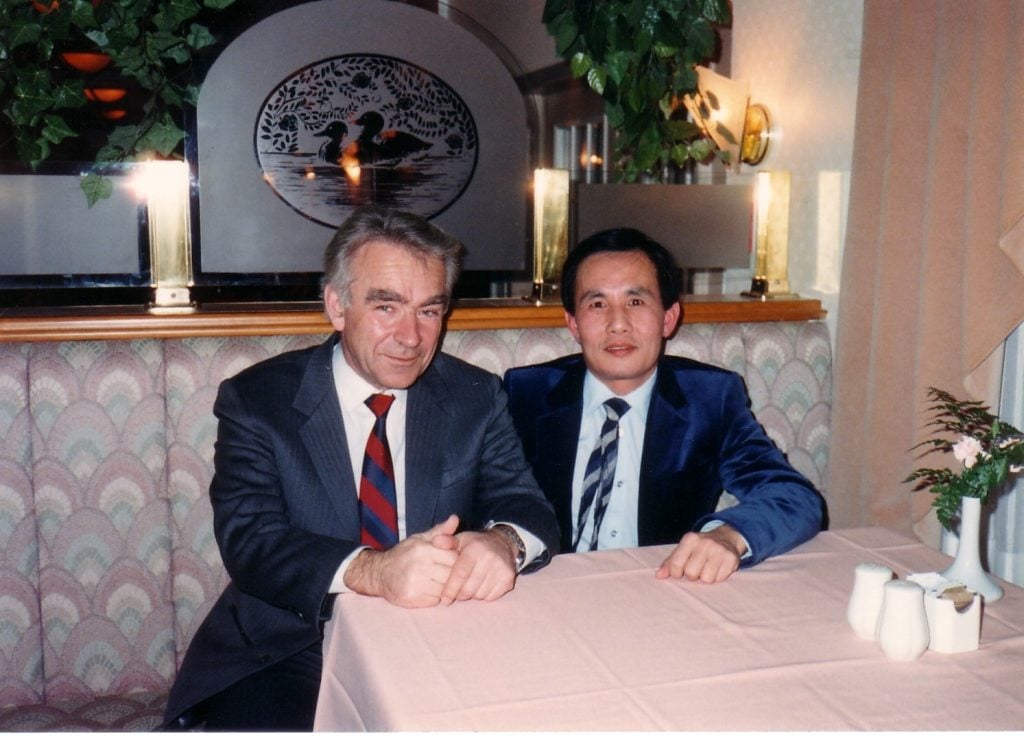
I remember that many people were hostile to the multiphoton idea, (perhaps the experiments were not good enough due to the laser characteristics, fluctuations, perhaps for other reasons). It took quite some time for this hostility to recede. Few groups in the world had the ability to carry out such studies because of the price of the laser and the cost of maintenance. For a few years, the Moscow group was practically the only competitor, if we except a first and short-lived study at Ohio State by Damon and Tomlinson as early as 1963 (Fig. 3).

Picosecond pulses and ATI
The heroic times of the Q-switch lasers terminated with the advent of mode-locking and, almost immediately, the Pockels-Cell technique. We now had a much higher peak power (and intensity) with less energy and less emissions of surfaces, and Gerard Mainfray was able to start systematic studies of MPI, which would occupy us for many years, with more confidence. The frequency of the laser shots was still low, but it was going to climb to 10Hz in the 1980s. It was in the late 1970s that I made my first long visit to the US (at the physics department at the University of Southern California, Los Angeles) where I worked for a year for Mark Levinson, a young professor after a PhD with Nicolaas Bloembergen (1981 Physics Nobel). See Fig. 4. Peter Lambropoulos was also a professor at USC at that time. Peter was also perturbation theory oriented, but with a taste for core atoms more complex than hydrogen. We had a collaboration which lasted for at least two decades. One of the highlights was a series of meetings in Crete in the 90s. Peter is the person I am indebted for knowing Lou DiMauro, with whom I had a long collaboration from the beginning of the 90s, and to whom I owe to be at Ohio-State. I guess I am jumping ahead of myself.
I would like to end the 70s part of my life by recalling the course led by Claude Cohen-Tannoudji at the Collège de France that several of us from Saclay followed with great interest for several years. A large part of what I know about photon/atom interaction, I owe to this course.

After my “postdoc” at USC in 1978–1979 we started looking at photoelectrons from MPI, and we were lucky enough to find the (fragile) first evidence of above-threshold ionization, or ATI (Fig. 5). I remember that after this first result it took us, with Guillaume Petite and Françoise Fabre, months to reproduce it. The 10 Hz rep rate laser helped a lot for the reproducibility. ATI is nothing but MPI, except that one or more photons are absorbed in the continuum. (Later it was shown by several groups that tens of photons can be absorbed, making the first result a bit skinny!). It is the ATI process which underlies the measurement of the harmonic phases, at the heart of the Attosecond Pulse Train. It was also in the 80s that Anne L’Huillier began the exploration of the harmonics which was the origin of the attosecond science almost forty years later.

The 80s were the time when the Chirped Pulse Amplification (CPA) invention of Strickland and Mourou (2018 Physics Nobel) changed the appearance of laser labs around the world by drastically shrinking the size of the lasers and making the femtosecond the standard pulse duration for high intensity systems.
From Femtos to Attos
The 1990s were a great decade for me. I started collaborations with Lou DiMauro’s group at Brookhaven and with the Laboratoire d’Optique Appliquée in Palaiseau, near Saclay. The LOA, which had several femtosecond lasers, was a bit ahead of Saclay. That was the time when the Dutch Foundation for Fundamental Research on Matter (FOM) in Amsterdam also began to be interested in femtosecond technology and sent Harm Greet Muller to LOA to learn it. Another physicist from Amsterdam, Mihai Gavrilă, of Romanian origin and with connections to the University in Bucharest, initiated bringing PhD students from Romania to FOM. At the same time Saclay was becoming part of a university, and it was easier to get graduate students working toward PhDs. Both Harm and I had our students working together at LOA with femtosecond lasers while Lou DiMauro was visiting me once or twice a year and I was visiting him on a NATO grant. The great thing in laser/atom interaction was the “knee” in the double ionization signal (Fig. 6) and the “stabilization” concept: an idea of Mihai Gavrilă according to which the ionization rate of an atom does not increase indefinitely with intensity but saturates (not in the usual sense) or stabilizes. The experimental evidence was extremely difficult to get and, as far as I know, only the group of Harm Muller in Amsterdam managed to confirm the idea. Mihai Gavrilă played still another role, together with Professor Charles Joachain, from Brussels. They used funding from the European Union to create a network of European labs including Lund, Vienna etc., setting the stage for the attosecond breakthrough of the millennium. We did several experiments with Harm’s Amsterdam group. The one I recall with most pleasure, I guess, is the one on Auger decay. One general idea (promoted widely by Rick Freeman, from Bell Labs) was that plasma radiation would be intense enough to generate nonlinear effects. So many groups were trying to irradiate metal surfaces with intense lasers with the hope of producing enough X-rays for that purpose. It was necessary to change the position of the laser impact on the target at each laser shot to maintain the sharp focusing required for high intensity. This was not easy technically with Khz lasers. Harm Muller had another of his (usually) bright ideas: use as a metal plasma source a liquid whose surface would naturally recover after each laser shot. Gallium, liquid at low temperature, was to provide the plasma and the X-ray radiation. The experiment worked, although the liquid mirror had several drawbacks (it splashed around when the intensity was a bit too high). Because of the high energy of the photoelectrons, a special version of the magnetic bottle spectrometer had to be built by Juleon Schins, then a postdoc at Saclay. I was very pleased, when I visited the Laser Lab at Saclay in November 2023, to see the spectrometer still in use!


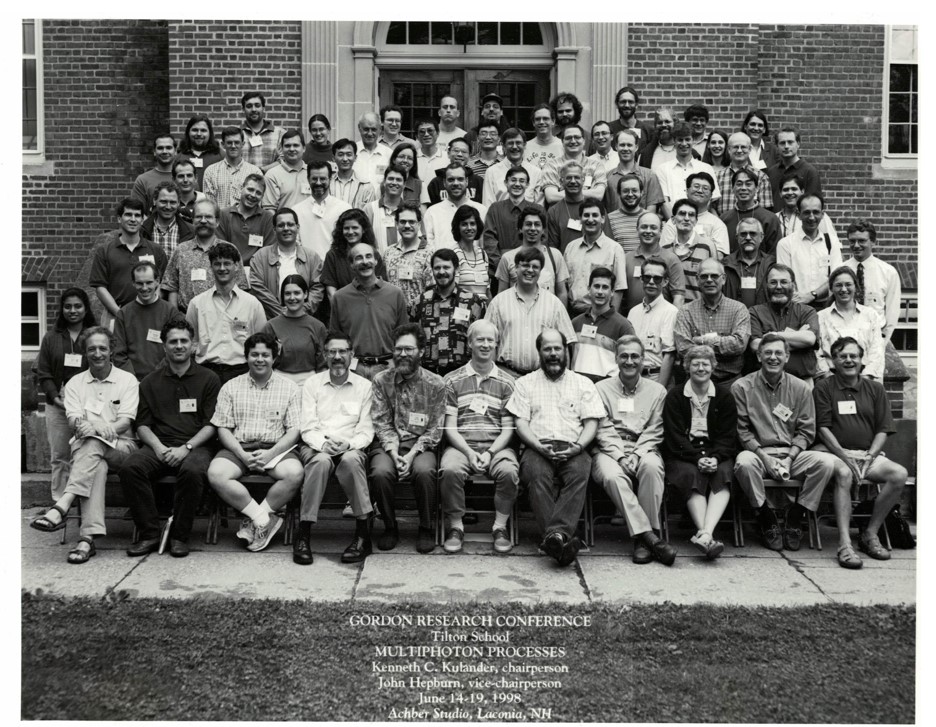
Rabbitt
With the 2000s my last years at Saclay were coming fast. The last PhD student I supervised (Pierre-Mary Paul, now Vice President at Amplitude Laser Group) was working for his PhD. Elena Toma was working for hers, under Harm Muller’s supervision. The results were at first very disappointing. Instead of the regular oscillation we expected, the data looked completely random. It took us several months to realize that the laser intensity fluctuations were responsible for this unfortunate situation and to find the cure: normalization to the total counts. Finally, the oscillation was there, and we could measure the harmonic phases, which demonstrated the attosecond pulses. We knew about the competition from Anne L’Huillier in Lund and Ferenc Krausz in Vienna. I remember we had one of the EU network meetings in Paris and Pierre-Mary Paul was very proud to show the results. The Science paper was published quickly (June 2001). A few years later (2004) a journalist, working for a popular science journal, guessed that attoseconds would lead to a Nobel Prize and speculated on the winners. He had a very good judgement, considering he was almost 20 years ahead of his time.
After Retirement from CEA
At that time, the CEA had a mechanical rule for retirement, based on number of years worked and age. Everybody was subject to it. I recall that Claude Manus, the head of the department and Gerard Mainfray, for many decades the group leader, had to leave under that rule a few years before me. I was no exception and I had to go in 2002. Fortunately, I had friends around the world who helped me in those circumstances. See-Leang Chin, professor at Laval University (Quebec), gave me support for enduring the Quebec winter (September 2002 to April 2003). Then we moved to Amsterdam for six months with the support of the FOM. Harm Muller was already leaving the intense-laser topic and was interested in other things (protein folding), but he took time to educate me in numerical integration of the Schrödinger Equation and I later exported his program to Ohio State. Then I got the Humboldt grant to spend a year at the Max Born Institute in Berlin thanks to Wilhelm Becker, Wolfgang Sandner and Horst Rottke. I had a great time there and I am indebted to all. Howard Reiss, then retired from American University, was there too (Fig. 9) as a permanent guest. I had known him for decades but then we had lot of time together and I had many opportunities to learn about strong field theory with him. He did not like the idea of tunneling and did not spare his critics. I guess his opinion slowly percolated to me, but I must admit that the Ammosov, Delone, Krainov (ADK for short) formula is very attractive for its analytical simplicity. I had the opportunity to meet Leonid Keldysh in Sicily in the late 90s, I believe, but I did not seriously discuss the point. I think that part of his work was far from his thoughts. Finally in 2005, Lou DiMauro, who had moved there from Brookhaven as a Hagenlocker Professor of Physics, introduced me to the Department of Physics. I am very grateful to him and the College of Arts and Sciences for the help they have supplied in my life.
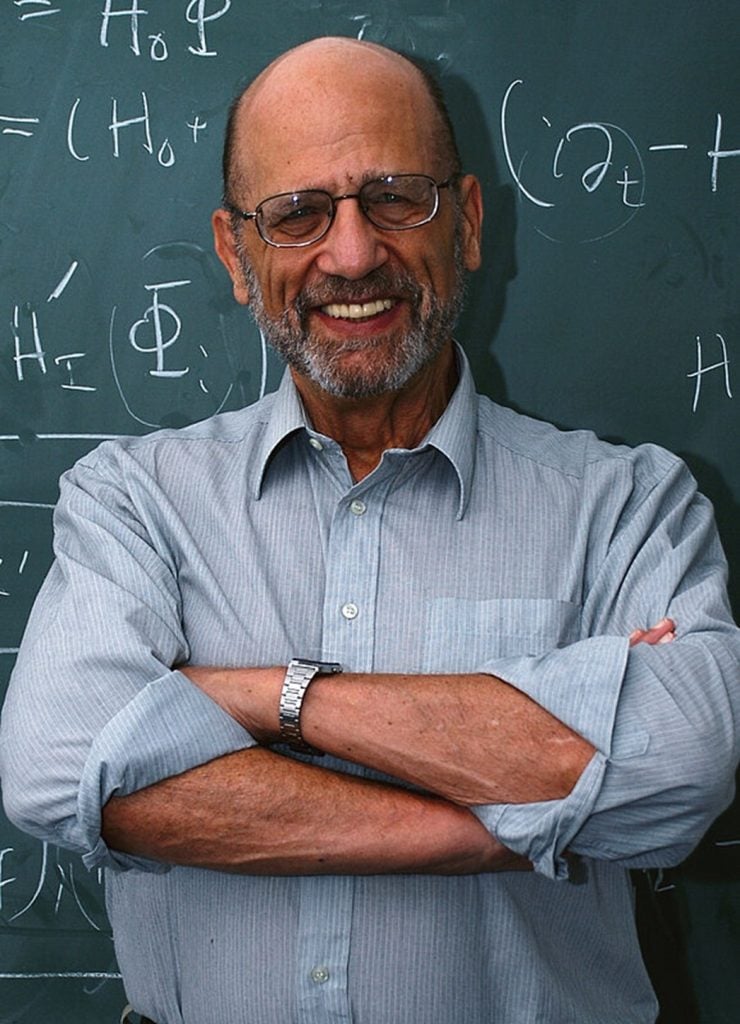
The decision of the Nobel Committee for Physics to award the 2023 prize to the founding experiments in attosecond science (see Fig. 10) was of course a wonderful surprise. Time is an eternal subject of philosophical questions, but for us physicists, it’s a matter of technology and careful measurements.
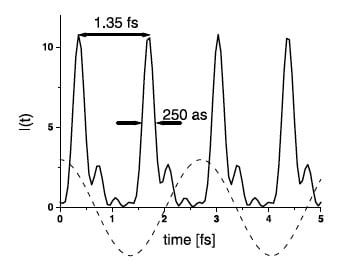
For the time being attosecond pulses have been mostly used to solve fundamental questions in atomic/molecular sub-cycle physics. Some new applications in medicine by the groups of Ferenc Krausz are naturally very exciting and promising.
© The Nobel Foundation 2024
Nobel Prizes and laureates
Six prizes were awarded for achievements that have conferred the greatest benefit to humankind. The 12 laureates' work and discoveries range from proteins' structures and machine learning to fighting for a world free of nuclear weapons.
See them all presented here.
